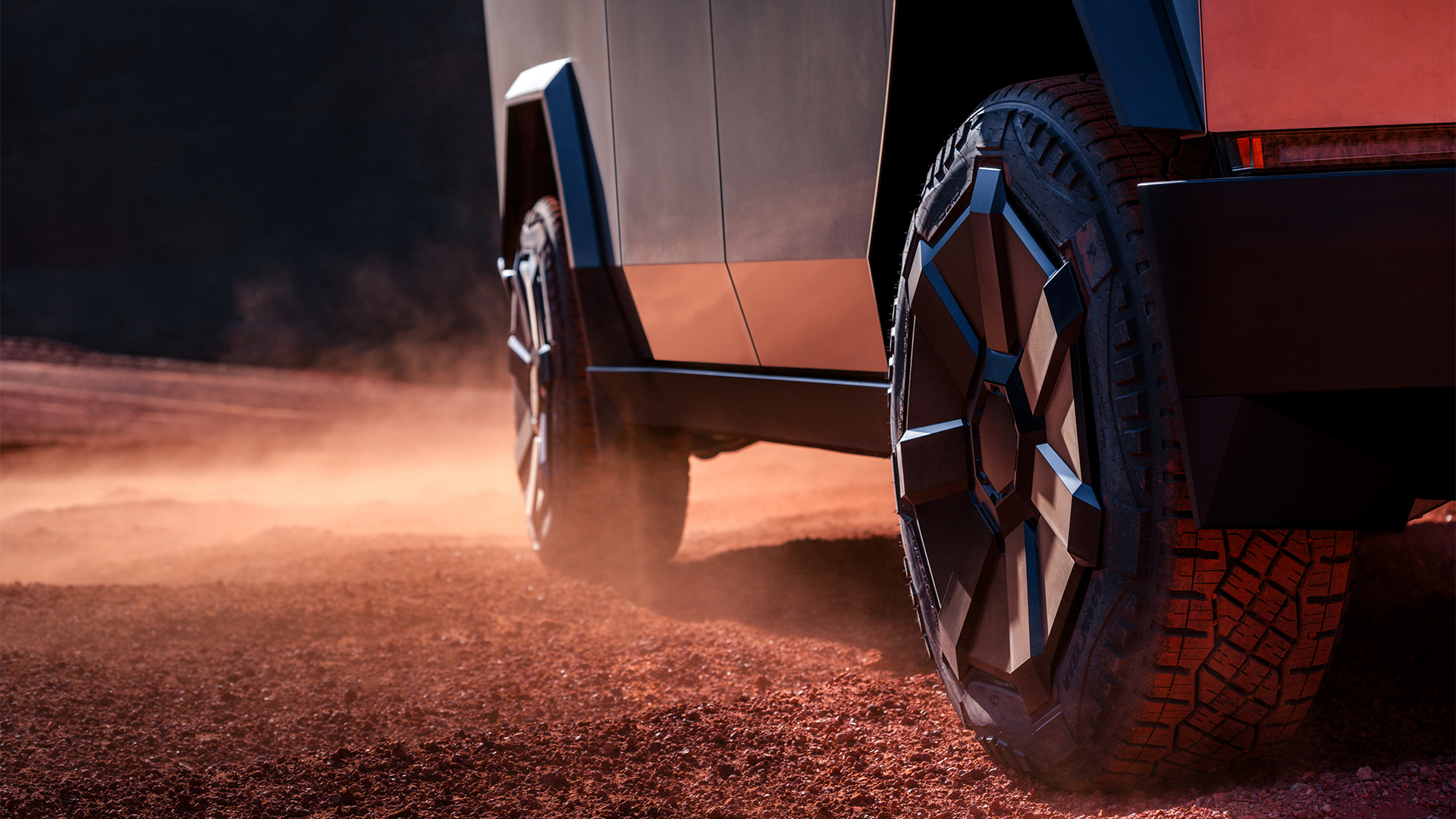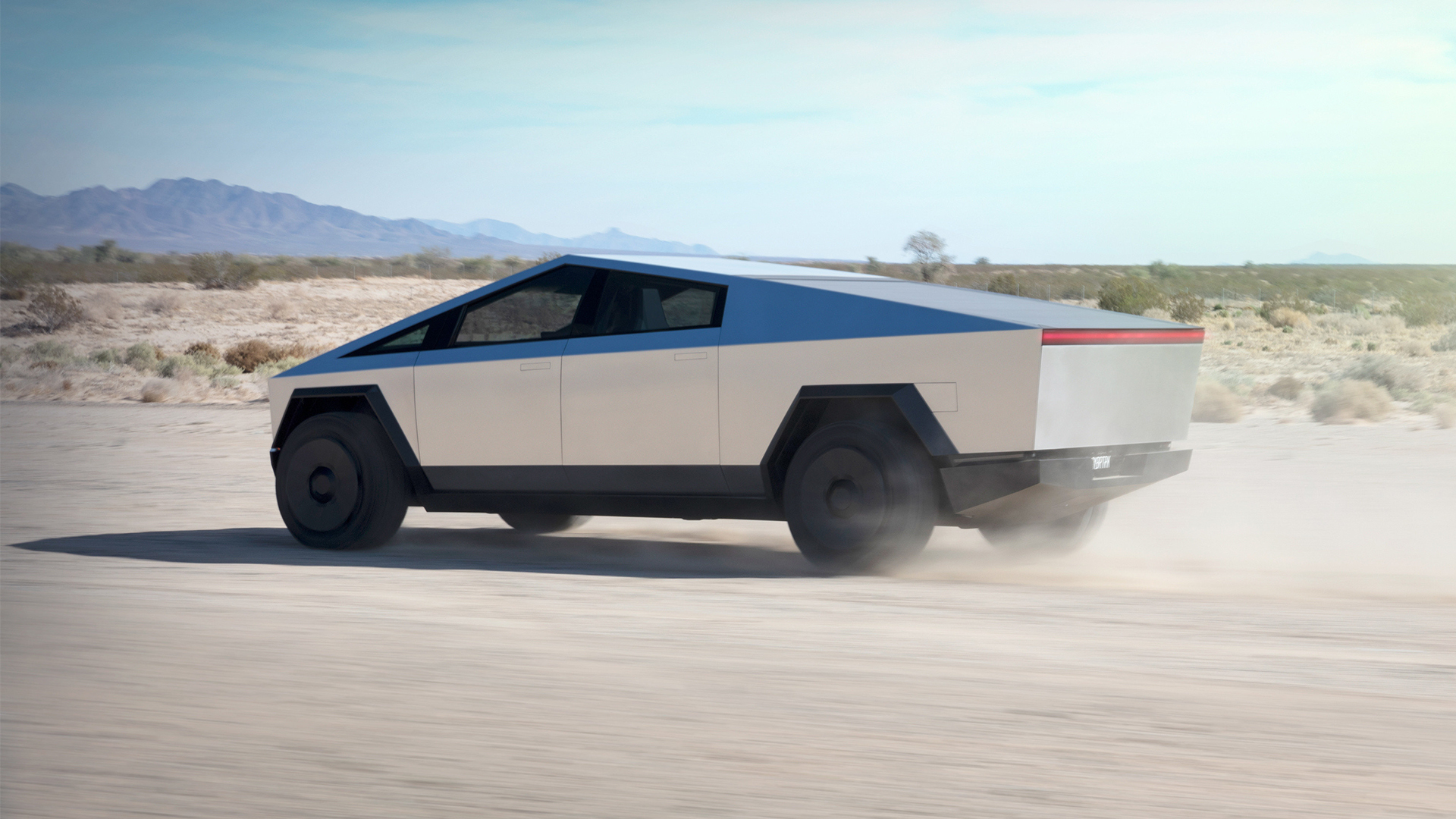Cybertruck owners are complaining about premature tire wear, but this isn’t just a Tesla problem
Heavy and hugely powerful EVs will eat rubber for breakfast

Social media and Reddit has been abuzz with a Cybertruck owner’s tale of tire woe, as the Cyberbeast driver suggested in a post that the rubber shrouding the polygonal EV’s 20-inch wheels has worn to a point where it needs replacing after just 6,000 miles.
The rate at which a tire wears is heavily dependent on the vehicle in question and how it is driven, but in general, having to replace a set after this sort of low mileage driving on public roads is not commonplace.
According to most sources of motoring information (your local tire supplier, or breakdown services), most drivers will get a minimum of 20,000 miles out of a set of tires in a front-wheel-drive car, extending to 40,000 for rear-wheel-drive machines.
Again, this is all highly dependent on the vehicle in question and the driving style, so the fact that forums have been alive with suggestions that Cybertruck chews through tires prematurely is probably giving Tesla an unduly hard time.
Without knowing all of the facts surrounding Cyber Truck Owners Club user Santoshm’s Cyberbeast (camber, wheel alignment, wheel balancing and tire pressures could be off, causing premature wear), it is difficult to say why they are experience such a poor return on rubber.

But the fact of the matter is, a truck that weighs 6,920lbs (that’s over three tonnes, metric fans) and produces 833bhp with a staggering 10296 lb-ft (13959 Nm) of torque is going to chew through tires – even if owners go easy on the throttle.
It comes as no surprise that similarly large electric EVs are also running into issues when it comes to tire wear. Last year, Rivian owners took to Facebook and other social media channels to complain of similarly poor tread-life on the R1T.
Sign up for breaking news, reviews, opinion, top tech deals, and more.
Again, this could have easily been down to a number of contributing factors, but many posited that 'Conserve Mode', which cuts power to the rear axle and lowers the ride height for increased aerodynamic efficiency, forces the front tires to do all the work – and messes with the overall geometry that can lead to incorrect wheel alignment and uneven wear.
But really, it could just be that this big, heavy and massively powerful truck tears off the line at every traffic light opportunity, just because it can.
Analysis: With great power comes great responsibility

The Tesla Cybertruck, particularly the range-topping Cyberbeast variant, is automotive hyperbole incarnate. Over-powered, over-weight and over-styled (or should that be under-styled?), it pushes the very boundaries of automotive design and engineering.
But while it is often easy to poke fun at Musk and his, at-times, madcap EV outfit, Tesla isn’t alone in bestowing extremely heavy electric vehicles with insane performance figures.
As is the way with electric motors in general, the amount of torque they can put down near-instantaneously means that the modern tire has to work harder than it ever has... and modern tires aren't cheap.
There was a time when investing in a 500bhp+ performance car came with the unwritten rule that tire bills would be financially crippling, but it feels like this has been lost in the world of EVs.
Take the frankly ridiculous Smart #1 Brabus model, as an example. This compact, largely generic family SUV develops 428bhp and 584Nm (431ft lb) of torque, it can accelerate from 0-62mph in 3.2 seconds and yet it weighs 2,325kg (5,126lbs).
Having driven said car, I was shocked at how often it spun its wheels under some 'spirited' throttle input. As a result, I would bet good money tire bills won’t be cheap on the Smart car, either.
So it begs the question – just because they are capable of it, do modern EVs really need this sort of power?
And surely the number of rubber particulates that something like a Cybertruck is kicking into the atmosphere is undoing some of the work battery packs and electric motors are carrying out in order to to reduce local emissions?
You might also like

Leon has been navigating a world where automotive and tech collide for almost 20 years, reporting on everything from in-car entertainment to robotised manufacturing plants. Currently, EVs are the focus of his attentions, but give it a few years and it will be electric vertical take-off and landing craft. Outside of work hours, he can be found tinkering with distinctly analogue motorcycles, because electric motors are no replacement for an old Honda inline four.